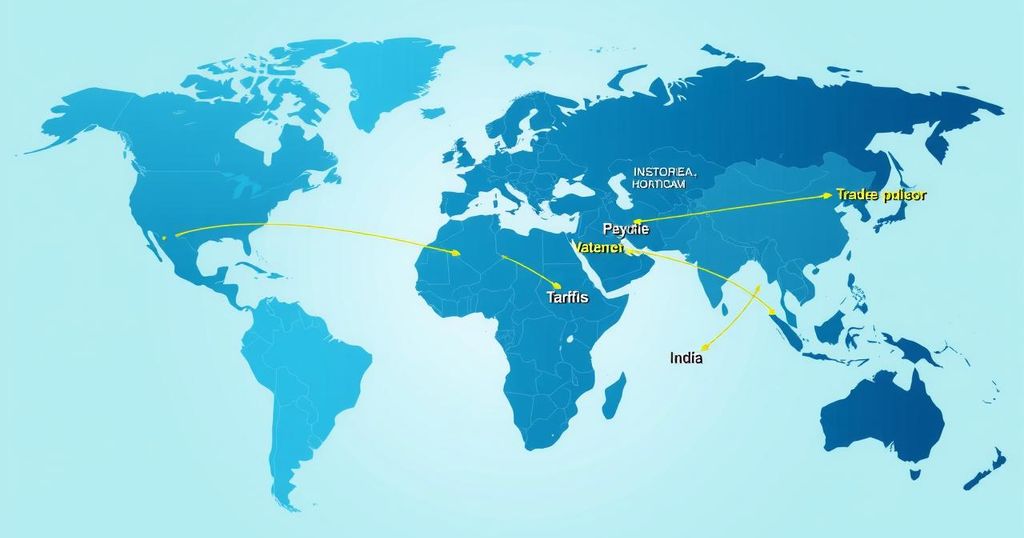Impact of New US Tariffs on Indian Export Sectors

India’s exports valued at $441 billion now face a 27% US tariff, presenting challenges and sector-specific opportunities. Compared to competitors like China and Vietnam, India may benefit in textiles and retain strength in gems and jewellery, while automotive and agricultural exports experience significant impacts.
In 2023, India has become the 12th-largest exporter globally, with exports valued at $441 billion. Recently, a flat 27% tariff was placed on all Indian exports to the United States, posing significant challenges. However, India’s position appears stronger compared to competitors like China, Vietnam, Bangladesh, and Indonesia, which face even higher tariffs: China at 34%, Vietnam at 46%, and Cambodia at 49%.
The automobile sector stands to face considerable impacts from a newly implemented 25% tariff on imported vehicles. Major Asian automotive manufacturers such as Toyota, Honda, and Nissan will likely feel the effects. While India’s total automobile exports to the US are relatively low, Tata Motors might suffer indirect consequences via its Jaguar Land Rover unit, which derives 23% of its revenue from the US.
India’s auto component industry contributes significantly, with one third of its $21.2 billion total exports going to the US. However, it represents only a small fraction (2%) of the US auto component imports, dwarfed by Mexico (39%), Canada (13%), and China (12%). In 2023, less than 0.5% of India’s car exports headed to the US, with Saudi Arabia, South Africa, and Mexico being more significant markets.
Conversely, India’s textile sector is poised to benefit from the new tariffs. With Vietnam, Bangladesh, and China bearing heavier duties (46%, 37%, and 34%, respectively), India stands to capture a larger share of the US market. Reportedly, India holds about 8% ($9.7 billion) of US textile imports, compared to China’s 30% and Vietnam’s 13%. The sector contributes only 2% to India’s GDP, lessening its exposure to global market fluctuations.
In the gems and jewellery market, India retains a solid position, accounting for 12.99% ($11.58 billion) of US imports. Competing countries like France, Italy, UAE, and Thailand play a minor role, suggesting Indian exporters may be less adversely affected by tariffs in this sector compared to others.
The agriculture sector faces challenges as key products such as Basmati rice, buffalo meat, and wheat are impacted by the 27% tariff. Nonetheless, processed items like pickles and spice mixes may still remain competitive against countries like China and Bangladesh. However, Mexico’s advantageous tariffs (0-5%) under the USMCA and proximity to the US creates stiff competition in fresh produce markets.
In electronics, India’s exports, worth $14 billion, will experience increased costs due to the 27% tariff. Despite this, India looks more favorable compared to Vietnam (46%) and China (34%). However, Mexico benefits from tariff-free access for compliant goods under the USMCA, which complicates India’s competitive landscape. Negotiations for a bilateral trade agreement with the US may offer future relief from these tariffs, enhancing India’s competitive edge.
In summary, while Indian exporters are challenged by the newly imposed 27% tariff on exports to the US, the effects vary by sector. India is relatively better positioned than key competitors like China and Vietnam in textiles and some electronics. However, agriculture and automotive sectors face particular vulnerabilities amid existing competitive advantages held by Mexico. Future negotiations with the US might further help mitigate these effects.
Original Source: www.business-standard.com




